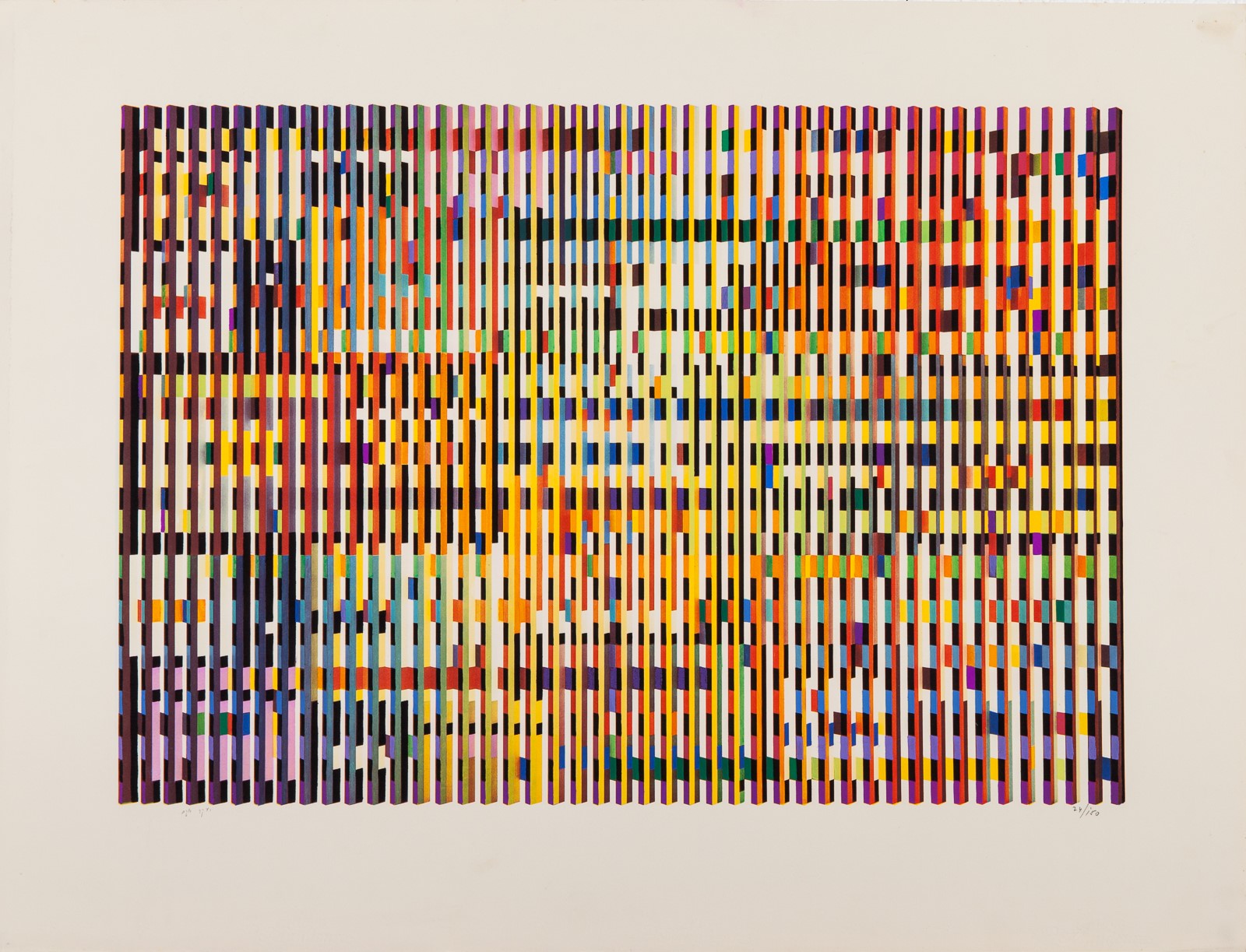Original hand signed prints, had been always the preferred method to collect art by well known artists , for a fraction of the price a unique piece would cost.

Yaacov Agam, Metamorphosis, 1964, hand signed original silkscreen
The art of printmaking has been around for centuries, and although the progress of time changed technology, the basic ways to make an art print remained similar.

Reuven Rubin, flowers in Caesarea, 1972, original hand signed lithograph
There are 3 levels of prints. The lowest level contains posters and reproductions. Those are usually sold at museum shops, and don’t have any retail value. At The second level, one would find prints that were signed in the plate. This means the artist had already passed away before the print was made, and basically had nothing to do with it. The signature on the print was copied from a different original print, with approval of the artists’ estate. This sort of prints is usually made in large editions, 300-1000 copies, and is valued at $30-$150.
The top level consists of limited edition prints. These prints are only made in collaboration with the artist, who had been present and overseeing the printing process, approved the quality, and hand singed each one, while numbering them. Editions such as those are made in smaller numbers, 25-200 copies, and unlike plate prints, once the edition is ready, it would never be printed again, to save value. Prices of these prints are very wide ranged, and they can be sold anywhere between $50, to $500,000, according to who the artist is, technique used, and rarity of the piece.

Marc Chagall, the tribe of Zebulun, 1964, original hand signed lithograph
It is always important to make sure who the publisher is, and that the paper is of good quality, but the most important aspect of purchasing art in the form of prints,(beside loving the art itself…) is to buy one that was originally signed numbered and supervised by the artist. This way you would insure the value of the art work will stay high, and might also increase over the years, due to the rarity of the edition. It is also a good tip to try and buy original hand signed prints of smaller editions, even if those might have a higher price tag, it would be worth it.
The size of editions takes us to the difference between printing techniques. There are 4 major ways to make a print. The first way is a lithograph.

Mordecai Ardon, the outskirts of Jerusalem, 1963, original hand signed lithograph
This form of print is made by carving the image into a huge stone, and then pressing it while water helps avoid overheating from friction. This way takes a lot of resources, and is hardly in use today, although very common in the past. The second way is called a silkscreen, (or serigraph).
In this way the artist uses a screen of fine perforated plastic sheet (or silk in older ones), in order to press the paints onto the paper, and like a lithograph, it will usually have a few layers of paint, each one to a different color in the print, which means pressing the paint 3-6 times on every print.

Yosl Bergner, blue lamp, 1972, original hand signed silkscreen
The third way is an etching.
In this way the artist etches the image onto a copper plate, paints it, and then uses acids to leave colors only inside the grooves. The print is than pressed to completion.

Tuvia Beeri, blue stripes, 1977, original hand signed etching and aquatint
Woodcut is the fourth major way of printmaking.
It is similar to etchings, only here the artist would use a wood block and chisels to form the art into it. One color is usually being applied, and no chemicals are being used in the process. The colored woodblocks themselves are sometimes sold to collectors who like to have the origin of the piece at home. In general, etchings and woodcuts come in smaller size edition, 10-50 copies, and that is why they are occasionally more expensive.

Jacob Steinhardt, Jonah and the fish, 1962, original hand signed woodcut
The Bineth Gallery is a long time publisher of original hand signed prints, by well known Jewish and Israeli artists. The Tel-Aviv based art gallery has the largest online collection of limited edition prints by Jewish artists, going back to prints that were made over 50 years ago, and are now rare and hard to find. Famous names such as Reuven Rubin, Mordecai Ardon and Nahum Gutman were among the artists that had collaborated with the gallery over the years, making editions of exquisite quality, now offered to the public on a brand new website. We are at your service with any help building your collection. Whether you are a beginner, or an expert, we guarantee you would find the art you are looking for.
